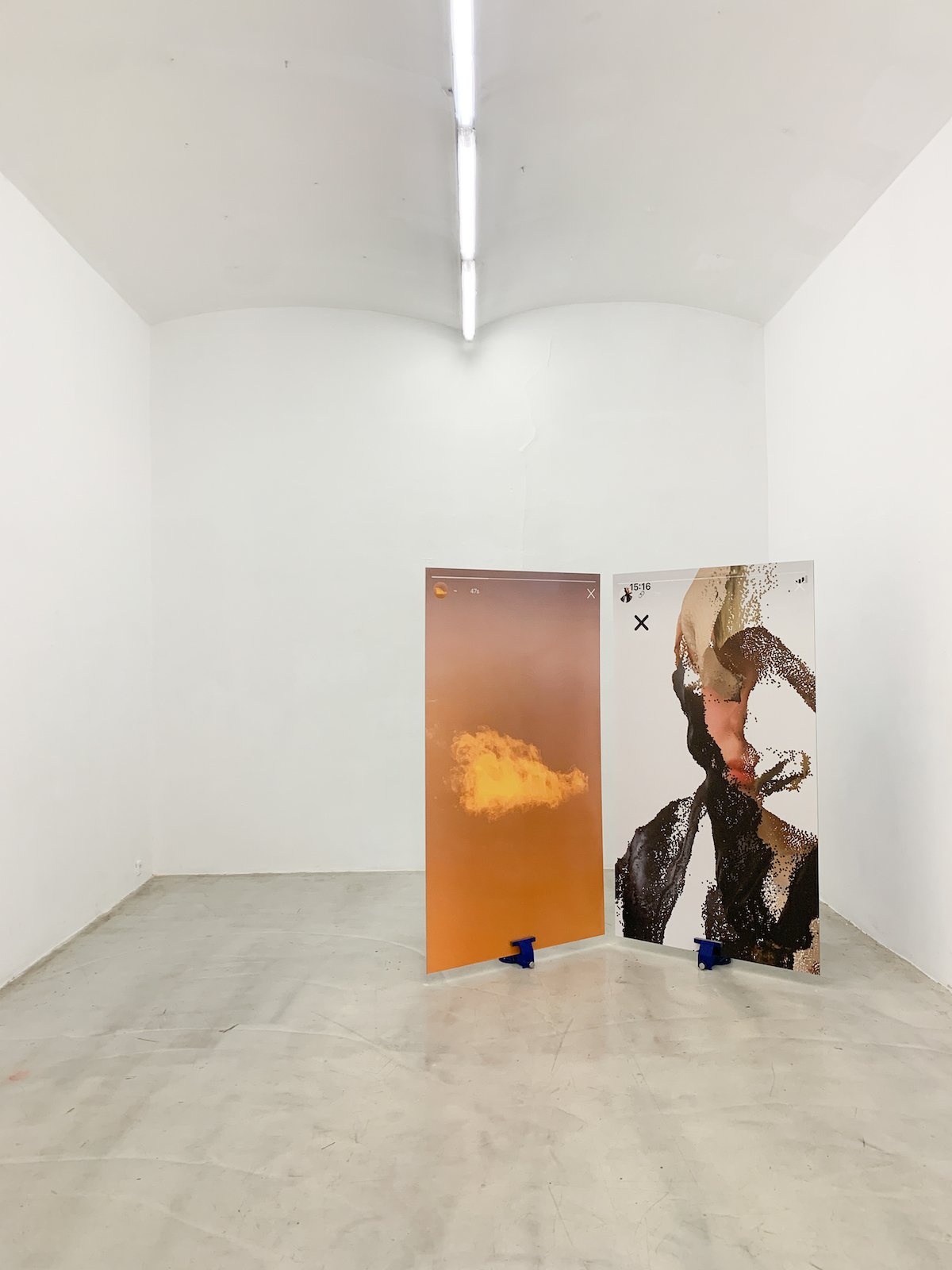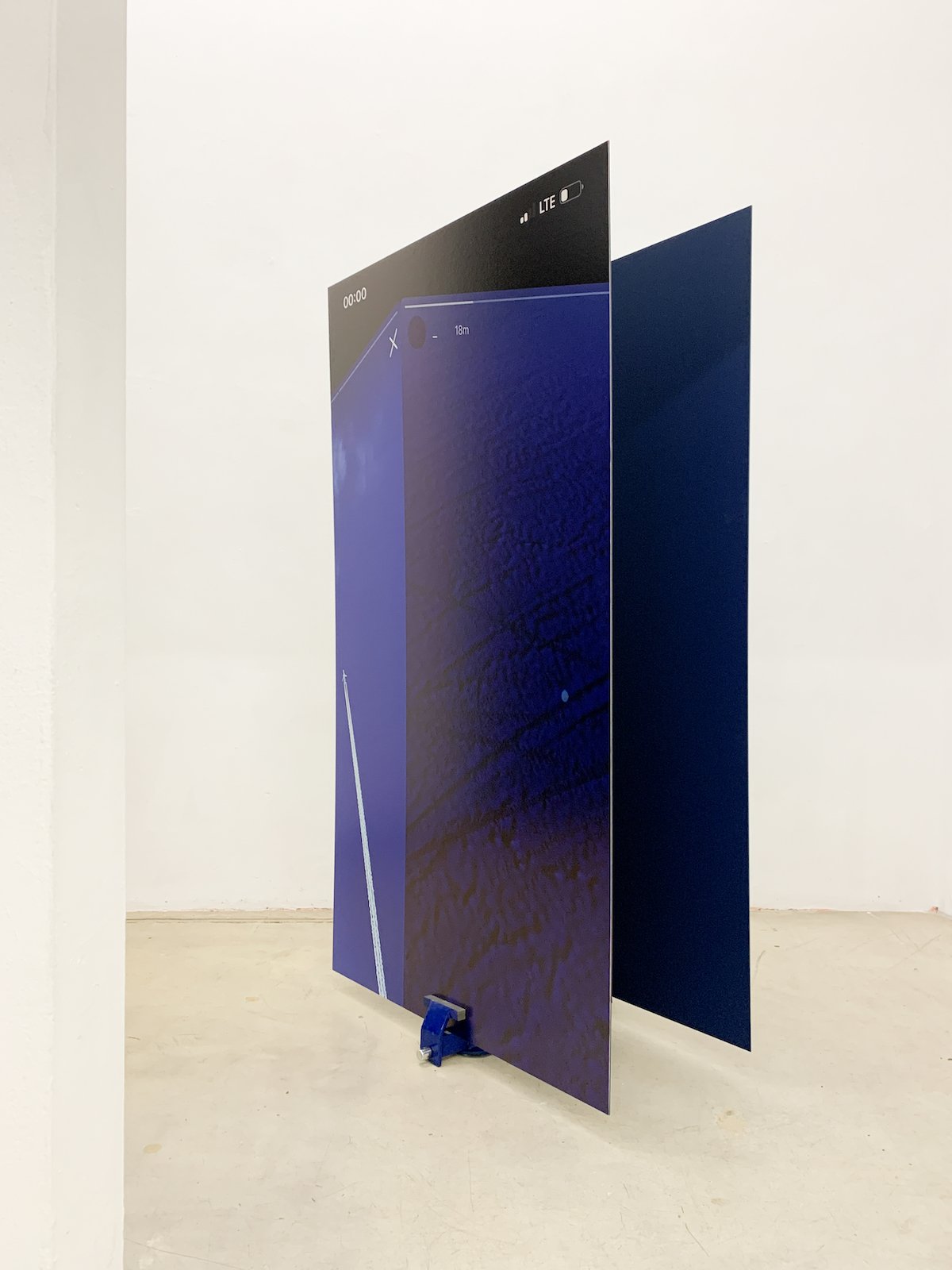Linn Phyllis Seeger
You I Everything Else (2020), Skinnerboox
Linn Phyllis Seeger started describing her work as “cloud-based” in 2019 when she started being interested in the cloud as a fluid and ephemeral extension of the human mind in the way it memorizes images, images and data. Within her iPhone-based artistic practice, she explores contemporary modes of intimacy enabled through digital communication. Social networks and urban spaces are the sites where her work is rooted, both seen as fluidly interconnected rather than two separate worlds.
You I Everything Else (2020), Skinnerboox
How has your practice and research around the cloud evolved over the years, considering technological changes?
When I initially started describing my work as “cloud-based” in 2019, I was interested in the cloud and its phenomenological parameters, and in the poetic potential of the cloud as a place that holds the records of contemporary experience: the cloud as a warden of human memory. I liked how the term itself is connotative of the sky and airiness, of being on cloud nine or notions of heaven, as well as the fluctuating and dissipating parameters of the weather, the climate, and my ever-changing moods. In reality, however, the cloud is not a nebulous place but an utmost terrestrial installation of energy-sucking server farms housed in heavy, static architectures. It doesn’t just house and guard human memories but creates and replaces them, and it even compromises one’s actual ability to remember — and most importantly, one’s ability to forget. Right now, I am grappling with how this term has been branded by tech corporations that have determined its common meaning to the point where I can’t say ‘cloud’ without thinking of computing and the Internet, even while trying to talk about the weather. And it drives me insane. Sometimes I would love to be able to just talk about the goddamn weather.
0N0E (2022), Skinnerboox
What does intimacy mean in the cloud and within digital communication?
I think digital communication technology has opened up entirely unprecedented ways for individuals to connect and be intimate with each other, and changed the meaning of intimacy, or the parameters under which intimacy operates. At the core of social media lies the promise, or the eventuality, to connect with other people through content: where chuckling over the same memes or simultaneously viewing the same livestream creates a sense of community. What that means is that under communicative capitalism, intimacy is a form of currency. Content (or content consumption) is being traded for the feeling of intellectual proximity to other people. As a result, intimacy is not just an innocent thing — it has been co-opted by tech corporations and is complicit in sustaining socio-economic hierarchies. Intimacy is utilized, played out as an instrument of power, where trust is a manufactured good made of relatable content and self-extinguishing DM’s. To a certain extent, communications technology has always been a means to bridge physical distances and has been facilitating intimacy through the circulation of information and private messages across geographies, ever since the installation of telegraph lines.
At the same time, however, digital communications technology has also always been an instrument of war, state governance, and surveillance. The Internet was initially developed during the Cold War, as a communications technology to outlive the nuclear apocalypse. And yet, conventional personal computing is defined by an almost prophetic promise that access to information, and access to communication tools that can be operated from everyone’s home without professional guidance or assistance, independent from governments, and authorities, will be liberating. It is the promise that there is power within unfiltered information, and agency within networked communication, where everyone can speak for themselves. Up to this day, the way the Internet often camouflages itself as a tool makes it a very slippery thing to try and pin down. Without any doubt, there is an ambiguity to communications technology and something inherently intrusive feels present in the intimate act of texting online. Sliding into a stranger’s DM’s is a rather ordinary thing to do. And yet, on the other side of someone’s public posts unfolds an utterly, almost obscenely intimate topology: the password-protected, personalized interface of one’s ultimate private space. Not only is the interface an accumulation of sensitive information but also the phone itself is usually to be found within arm’s length from your body, kept close, and held tight. I take my phone with me when I go to bed, I place it right next to me, patiently waiting for me to check my DM’s.
0N0E (2022), Skinnerboox
How do you take into account the topic of unpaid labour in your work?
In my work, I am looking specifically at the (unpaid) labour of history writing through the sad post. Smart technology has successfully absorbed historiographical terminology within interface structures, and organizes everything in timelines — from feeds to correspondences, to each and everyone’s personal history of information. Every digital artefact comes with a timestamp, whether it is messages, photos, posts, or alike; arranged in vertical grids, to be tunnelled down forevermore. Once it is scrollable, it is an archive.
The act of creating content out of one’s mundane experiences is labour, but so is consuming that content, and processing it as part of a larger, multidimensional rhizome of narratives that are circulating in real-time across a rabbit-warren architecture of online spaces. News of war, humanitarian crises, and climate disasters are consumed in one continuous scroll alongside cat videos, thirst traps, Kim Kardashian’s shapewear ads, or a friend’s suicide note on their Story. Simultaneous to this ubiquitousness of chronologically organized systems within high-tech software, the very same structures expose their defeat: no real understanding is gained, and no meaning is produced when considering disparate events in chronological timelines. Online spaces revolve around sustaining and circulating “this ceaseless flow of content [...] solely dependent on an immense body of documentative labour.” As Samiha Meem further elaborates in her piece ‘Post Everything’ (2021), the time spent on social media “reproduces and accelerates the effects of individuation and isolation brought by late-stage capitalism. Digital creators are virtual frontline workers in this malaise and are tasked with addressing the gap that has formed in their relationship with others.”
0N0E (2022), installation view of solo exhibition at WAF Gallery Vienna
How do you keep your work alive in both a digital and physical environment? How does its circulation change and affect it?
Although (or because) my work is reflecting explicitly on digital environments and online phenomena, I am interested in translocating my work from the comfort zone of screens into the oddness of physical exhibition spaces. My work plays a lot with the familiarity felt when looking at those snippets of conventional interfaces that have become such a huge part of the contemporary visual experience. My work allows the viewer to recognize what they have seen before. Yet there is an eeriness, or something monstrous about those scenes depicted in the screenshot assemblages I create. I think the most terrifying thing is when your perception of that which you deem familiar suddenly flips and you feel threatened by the most trivial scenes.
I am trying to articulate this in my work. There are text message fragments scattered across most of my work, fragments which might be faint memories of a conversation I once had, or messages I’ve sent to myself. Averaging 10-15 hours of screen time on my phone every day, I navigate digital interfaces as much as I navigate physical space — but these spaces do not form separate topologies. You can be online, filming, or using your phone in any other way, while being outside or while interacting physically with people at the same time. I am interested in the porosity of digital and physical environments, and how imagery circulates within both.
0N0E (2022), installation view of solo exhibition at WAF Gallery Vienna
In which direction are those images you create going?
At the moment, I am mostly working with moving images as a means of inhabiting and thinking through the general obsession with video formats online. I am interested in the way in which information is circulated as stories and articulated through moving images.
Bob the cactus and I, self-portrait in Josh's studio, February 2023
What are you working on at the moment? How do your projects come together as a whole?
I am currently starting to produce new work for two upcoming shows in 2024, while still finalizing a moving image piece I have been working on for the past year. I have only really started building an exhibition practice around my recent bodies of work in 2022 (with a solo show at WAF Gallery in Vienna, and the Foam Talent show in Amsterdam), and I am thinking a lot about how to further confuse, rather than merge the boundaries between digital and physical environments within my work and installations. So far, my more photographic screenshot works and my moving image pieces have only been shown separately, and I would like that to change.
Fire (2023), screenshot of video taken in Los Angeles in 2019
Where do you think the authentic self lies considering identity today is something rather fragmentary, split between the virtual and the real? What’s more real at the end of the day, the virtual or the offline?
Smart devices are in many ways extensions of the human body already — tracking not only the movements of users across apps and websites but also their steps, heart rate, calorie intake and so on, while even the physical gestures used to operate the device now are branded and patented (like swiping). As a result, it is hard to make a clear distinction between what is ‘virtual’ and what is ‘real.’ I don’t think the self is ‘split’ between online and offline — I think it is much more fluid. Online and offline environments both provide individuals with opportunities for genuine and authentic communication, knowledge exchange, and creative self-expression, and both realms can fail or be failed, abused or abused in doing so. What is said online can be as authentic or pretentious and false as that which is said offline — with people lying straight in your face, or online violence, harassment and isolation having very real and very visceral implications on the lives of individuals. At the end of a long day spent doom-scrolling and negotiating various forms of intimacy across geographies and time zones, I do however, like to remind myself of the fact that I physically inhabit an actual spacetime existence, and the reality of that is soothing.
I’m not a believer (2023), screenshot of conversation had in 2021
Archive (2023), screenshot of camera roll with photos taken of my phone while playing video piece 'Doomscrolling: Mourning and premenstrual melancholia. Okay. From dusk till dawn: Shitposting your way through the abyss’
interview ILARIA SPONDA
What to read next
















